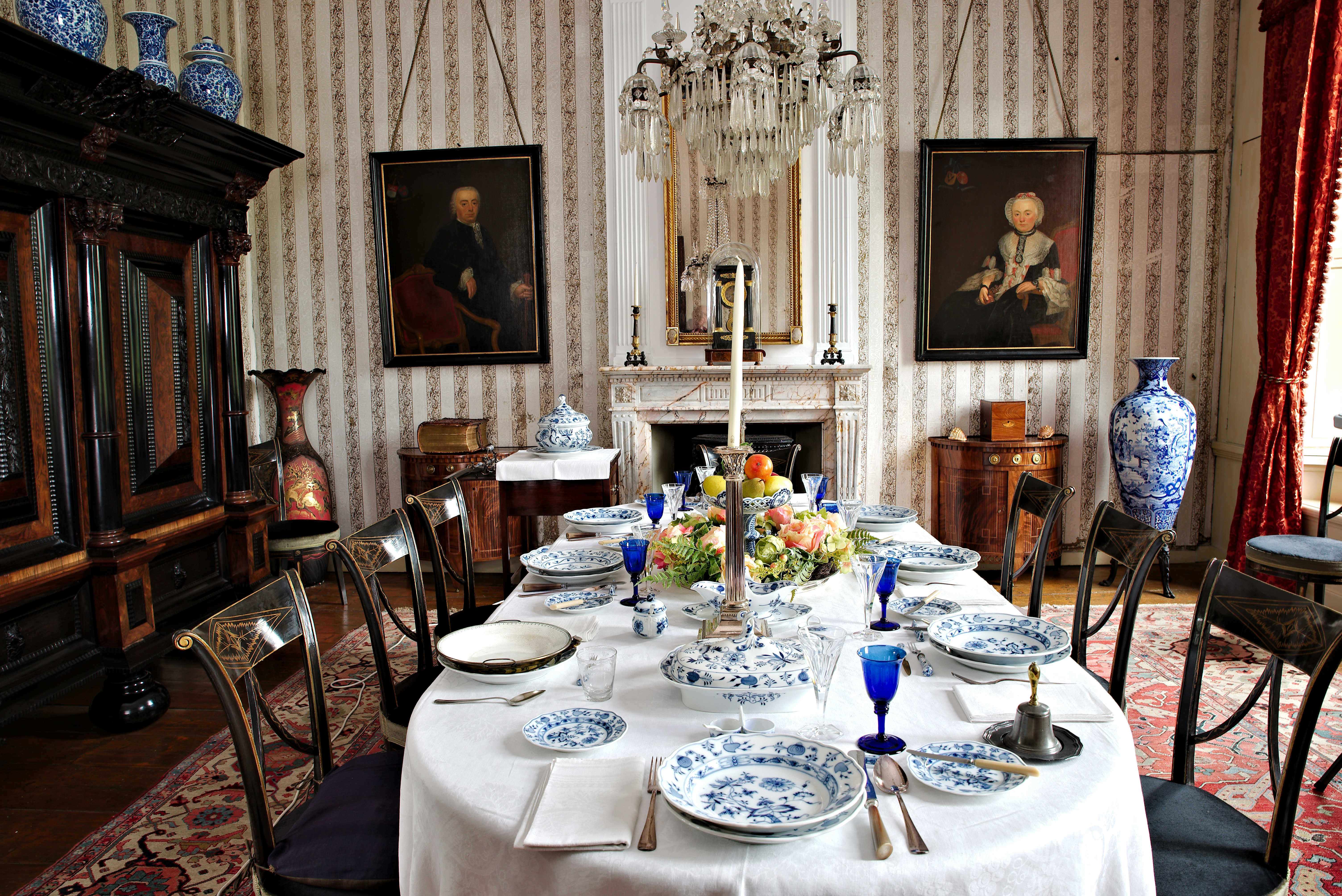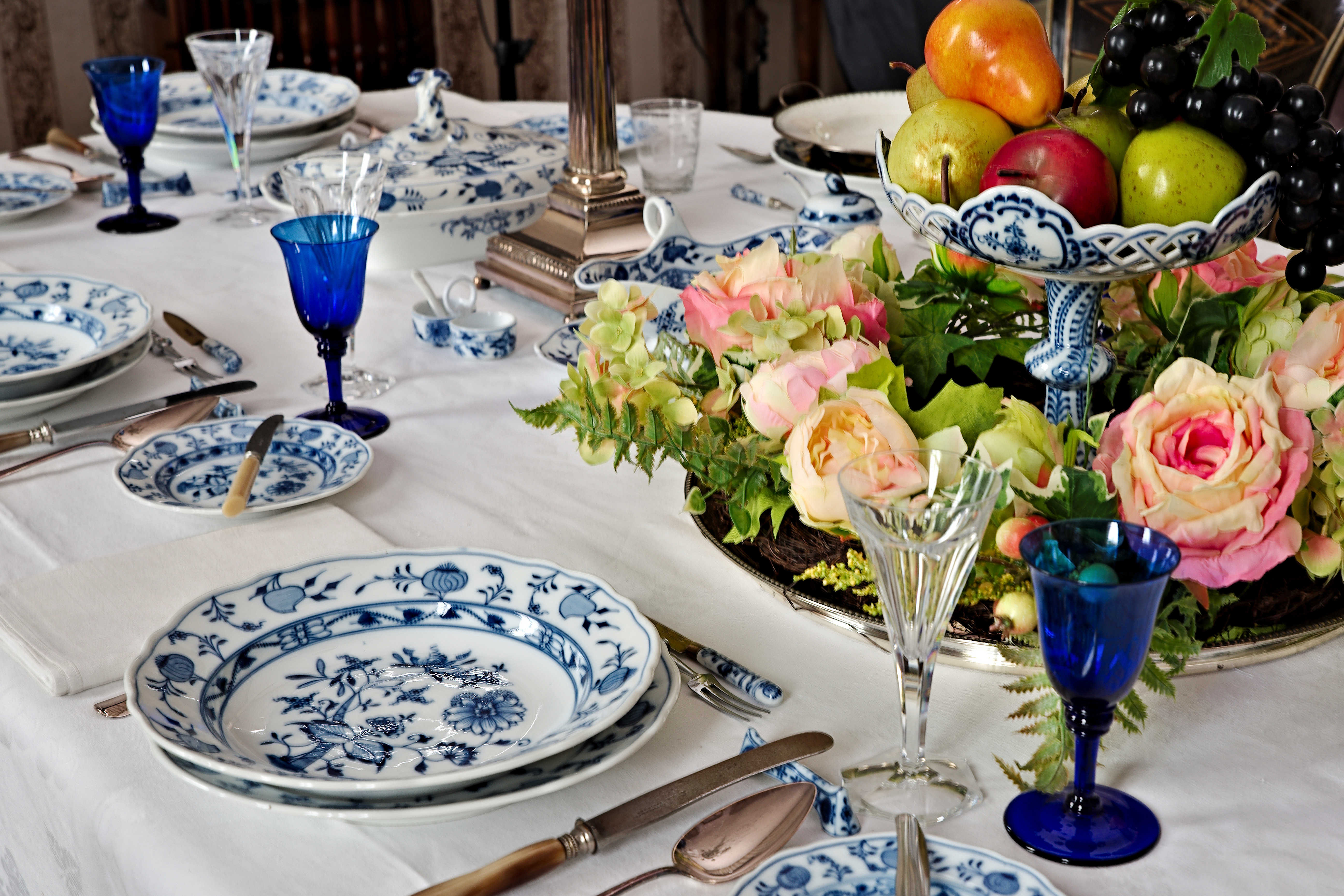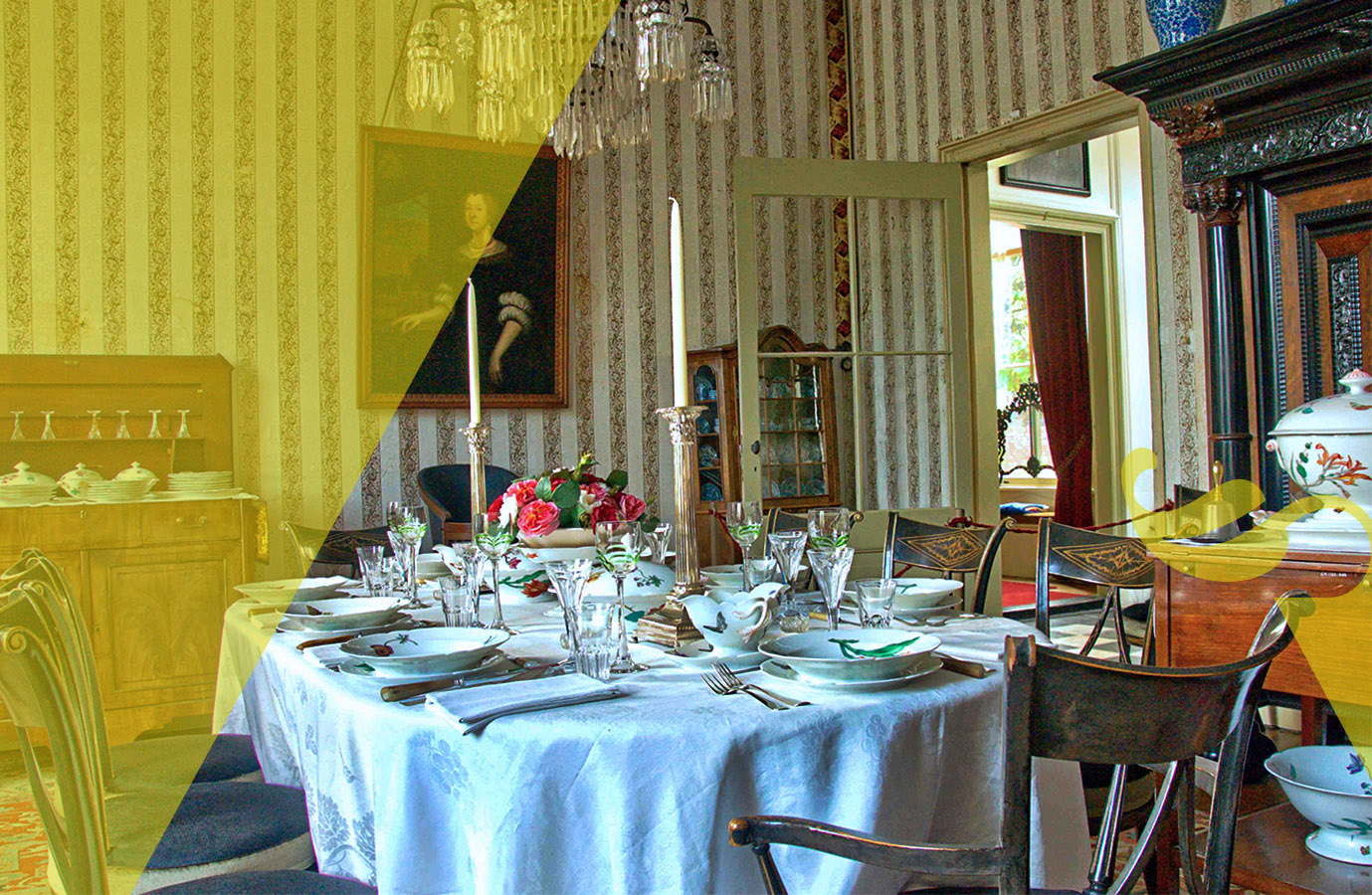.
Blue Onion Porcelain
The story behind it
Today the most beautiful ceramic services are displayed in shops everywhere under various brand names. The history of Blue Onion (Zwiebelmuster), however, dates back centuries and takes us to China, where porcelain originated. We owe the name to Italian explorer Marco Polo, who described the product in 1295 as as smooth, hard and transparent as the shell of a porcella, a type of sea snail. Chinese porcelain is classified by era, and the period of the Ming dynasty (1368-1644) in particular is regarded as the pinnacle of fine Chinese porcelain. Beautiful motifs were painted on white porcelain using glazing techniques. Today we know more about the ingredients that are needed for making hard-paste porcelain, which the Chinese managed to keep secret for a very long time: quartz, feldspathic rock and kaolin. The latter is (white) porcelain earth - the more, the harder the porcelain - named after the Gaoling, a ridge in the north of the Jiangxi province, near the city of Jingdezhen, the “Porcelain Capital.” The Blue Onion floral motifs originate here.
Many people were captured by the thin, transparent porcelain’s elegance, even the sound of which was different to earthenware. Monarchs and noblemen displayed beauty and their wealth on their tables by amassing vast collections of Blue Onion. People wanted to be able not to just import the product, but make it themselves, and in the 16th century Italian potters relentlessly tried to find out how it was done. Eventually they succeeded in creating a creamy white soft porcelain by adding glass frit to the clay, but they were unable to replicate the experiment. In the following century the French were more successful; they worked with soft clay and were inspired by oriental motifs. Hard porcelain was invented in Germany in 1709 by Johann Friedrich Böttger, and a year later the Meissen Manufactory was founded. The secret of making porcelain was spread by renegade employees and other factories in what are now European countries, arose.
Zwiebelmuster
One of Meissens best designers and decorators in the early days was Johann Höroldt. After Böttger died he took over the studio and started painting delicate chinoiserie scenes, which became very popular. Later he designed more European landscapes and ‘German flowers.’ Under his management porcelain decorator J.D. Kretschman developed the Zwiebelmuster motif in 1738/39, the successful blue porcelain with its patterns of stylized flowers, leaves and peaches in a blue underglaze. It was derived from the Chinese example of the three blessed fruits peach-pomegranate-lemon (sometimes varied with a striped melon or ‘tiger lemon’). The motifs were not always recognized, and people often mistook the melon or pomegranate for an onion. Hence the porcelain became popularly known as Zwiebelmuster (onion, in German).
Blue Onion has 3 motifs, related to its position on the object: Spiegelmotiv (mums branch, bamboo bush and climbing vine), Kehlenmotiv (lotus blossom and climbing vine) and the Fahnenmotiv (originally three fruits, peach, pomegranate and melon). The peony became a fantasy creation. The large trefoil was left out over the years.
After 1860, a taste for more traditional motifs arose. In wealthy (bourgeois) circles the possession of a Zwiebelmuster tableware set and decorative Meissen porcelain were must-haves. Manufacturers such as Villeroy & Boch, Hutschenreuther, Rosenthal and many others, copied Zwiebelmuster, which is still in use and is also ‘translated’ into contemporary motifs.



